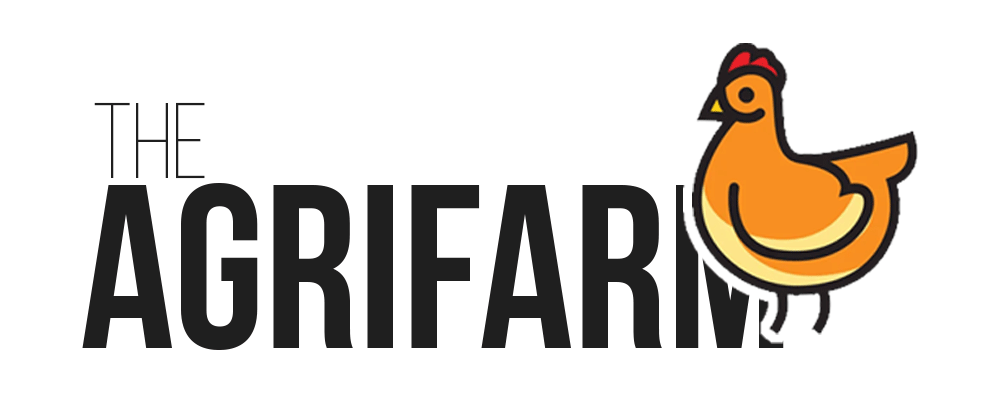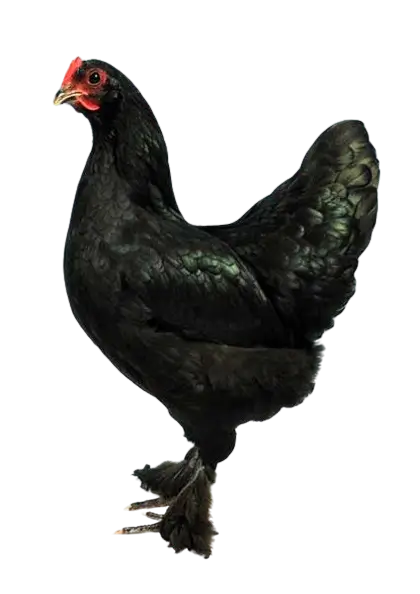Appenzeller Barthuhn

The Appenzeller Barthuhn is a chicken breed that originated in the historical Appenzell region of Switzerland. Barthuhn means “bearded chicken” in Alemannic German, the dialect spoken in that area. Local chickens were crossbred with exotic chicken breeds such as Italiener, Polverara, and Russian Bearded to create the breed. The breeders aimed to create a chicken with striking plumage, a distinctive crest, and better resistance to frost.
The Appenzeller Barthuhn chicken is also known as Appenzelloise Barbue in French, another official language of Switzerland. The breed is one of two chicken breeds from the Appenzell region, the other being the Appenzeller Spitzhauben.
TYPES and Color
There are three types of this breed, categorized by the color of their feathers: partridge, black, and blue-laced.
Partridge
The partridge type has a base color of reddish-brown with black spangles.
Black Type
The black type has a solid black color with a green sheen.
Blue-laced
The blue-laced variety displays a base color of slate blue with darker blue lacing.
Weight of Male and Female
The Appenzeller Barthuhn chicken is a light breed. The male, or cock, weighs about 2.0–2.3 kg, while the female, or hen, weighs about 1.6–1.8 kg.
Egg Production, Egg Color, and Egg Weight
The Appenzeller Barthuhn chicken is an excellent breed for egg-laying. They lay approximately 150 eggs annually and can lay eggs throughout the year, even in cold winter. Appenzeller Barthuhn hens consistently lay medium-sized white eggs with smooth, glossy shells weighing an average of 55 g.
Appenzeller Barthuhn Chicken Size
The Appenzeller Barthuhn chicken cock has a height of approximately 40 cm and a length of around 60 cm, while the hen has a height of about 35 cm and a length of about 50 cm.
Birth Rate Annually
The Appenzeller Barthuhn chicken is a moderately prolific breed. The birth rate annually is about 150 chicks per hen. The breed is not very broody, meaning they do not tend to sit on their eggs and hatch them. Therefore, they may need artificial incubation or a foster mother to hatch their eggs.
Breeding Hints
Breeding poultry requires careful selection of healthy and robust birds that match the breed standard. Avoid birds with defects or illnesses like crooked beaks, leg deformities, or respiratory issues. Provide a spacious, clean coop with adequate ventilation, bedding, and nesting boxes. Ensure the coop has enough perches and roosts for the birds to rest and sleep. Provide a secure and predator-proof enclosure for the birds to roam and forage.
Providing a balanced and varied diet that meets the birds’ nutritional needs, including grains, seeds, greens, fruits, vegetables, insects, worms, and other treats, is essential. Always provide fresh and clean water, and avoid overfeeding or underfeeding the birds, which may affect their health and fertility.
It is necessary to monitor the mating behavior and fertility of the birds. Observe the signs of heat and readiness of the hens, such as squatting, crouching, and vocalizing. Observe the courtship and mating rituals of the cocks, such as crowing, strutting, and pecking. Ensure that the cocks and hens are compatible and harmonious and that the cocks are not too aggressive or dominant.
Collect the eggs daily and store them in a cool and dry place, marking them with the collection date and bird type. Incubate the eggs artificially or naturally, depending on your preference and availability. Artificial incubation requires a reliable and accurate incubator to control the eggs’ temperature, humidity, and turning. Natural incubation requires a broody hen to sit on the eggs and hatch them. The incubation period is about 21 days.
Care for the chicks after they hatch. Provide a warm and cozy brooder with a heat source like a lamp or heater. Use soft and absorbent bedding, such as wood shavings or straws, and provide a shallow and clean waterer and a feeder with a starter feed, such as crumbles or mash. Monitor the chicks’ health and growth, and watch for signs of illness or injury, such as sneezing, coughing, limping, or bleeding. Vaccinate the chicks against common diseases, such as Marek’s disease, coccidiosis, and Newcastle disease.
General Characteristics
The Appenzeller Barthuhn chicken is a remarkable breed with various appealing characteristics and qualities.
- Appenzeller Barthuhn boasts unique and attractive features such as spangled plumage, a bearded face, and a crested head.
- Appenzeller Barthuhn chickens are known for their friendly, docile, lively, and energetic personalities.
- Appenzeller Barthuhn chicken also possesses an excellent egg-laying ability and is produced consistently throughout the year.
- Appenzeller Barthuhn chicken is hardy and adaptable, with a high resistance to frost and diseases.
Why you should choose this breed for your backyard flock?
The Appenzeller Barthuhn chicken is a breed that deserves more attention and appreciation from enthusiasts. This breed has many advantages and benefits, making it an excellent choice for your backyard flock. Here are some reasons why you should choose this breed:
The Appenzeller Barthuhn chicken is a beautiful and ornamental breed. The breed has a stunning and unique appearance, with spangled plumage, a bearded face, and a crested head. It comes in three colors, each with its charm and appeal. This breed can add elegance and diversity to your flock, attracting your neighbors’ and visitors’ admiration and curiosity.
The Appenzeller Barthuhn chicken is a friendly and docile breed. This breed has a gentle and calm temperament, with a lively and energetic personality. The breed is easy to handle and tame and will bond well with you and your family. It is also friendly and peaceful with other chickens and will not cause any trouble or conflict in your flock. This breed will bring joy and entertainment to your backyard and make a great pet and companion.
The Appenzeller Barthuhn chicken is an excellent egg-laying breed. The breed has consistent year-round egg production, even during the cold winter. It lays medium-sized white eggs that are rich, nutritious, delicious, and flavorful. The breed could be more broody, meaning they will continue laying eggs instead of hatching them. It will provide a steady and reliable source of fresh and organic eggs for your table.
The Appenzeller Barthuhn chicken is a hardy and adaptable breed. This breed is highly resistant to frost and disease and can survive in harsh and challenging conditions. It can adapt to different climates and environments and thrive in various regions. It is also economical and low-maintenance and does not require any special care or attention. This breed will save you time and money and give you less hassle and worry.
The Appenzeller Barthuhn chicken is a versatile and dual-purpose breed. The breed has a potential for both meat and eggs, as it has a light and well-muscled body, with a compact and well-muscled body. The breed has a tender and tasty meat, which is lean, healthy, and suitable for various dishes and cuisines. This breed will offer you more options and flexibility and satisfy your culinary and nutritional needs.
As you can see, the Appenzeller Barthuhn chicken is a breed that has many positive and attractive features and qualities. This breed is a rare, valuable gem and a worthy addition to your backyard flock. If you want a chicken breed that combines beauty, charm, and productivity, consider the Appenzeller Barthuhn. You will not regret it!
What is the difference between Appenzeller Barthuhner and Appenzeller Barthuhn?
The Appenzeller Barthuhner and Appenzeller Barthuhn are two names for the same breed of chicken. The former is the German name, while the latter is the English name.






